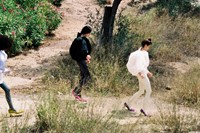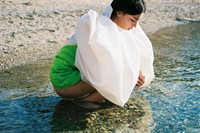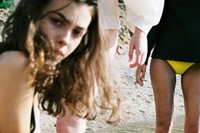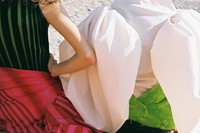If the term “empowered” has become a particularly popular – if overwrought – way to describe womenswear collections of recent seasons, then Spanish designer Paula de Cánovas del Vas is well aware of the potential pitfalls of deeming her own clothes as such. “I feel like when people use the word empowerment it’s always related to men, and masculinity, and just making men’s clothes for women,” the Central Saint Martins graduate says. “But for me, feeling empowered is about feeling sensual; feeling sexy or elegant. It’s about being unrestricted, and being seen.”
Her graduate collection, shown as part of Saint Martins’ MA presentation in March, was a deeper delve into just that – what does empowered clothing look like when you strip away any suggestion of menswear? The response was a joyfully disparate mix of techniques and styles, an apparent reflection of how she saw the women around her – blown-up felted wool sweatshirts and vast drapes of fabric delighted in their excessive proportions; a vivid Crayola-toned palette, embossed flowers and intarsia Op-Art-esque stripes provided a surreal bent, while latex leggings, worn throughout, articulated an undercurrent of seduction. “There is a sort of fantasy,” Cánovas del Vas says. “But at the end of the I need to deliver clothing that feels good when you are wearing, and that you are unrestricted.”
“For me, feeling empowered is about feeling sensual; feeling sexy or elegant” – Paula de Cánovas del Vas
Her colleagues at Central Saint Martins – including a particularly close-knit group of fellow women designers – were able to test this in practice. “I think that being a woman working with other women, you’re always thinking: will they feel comfortable in this? Will they feel good working in it?” Cánovas del Vas remembers undertaking the MA as a stream of questions like these, each of which shaped the way she approached design. “Everyone really pushes you to say, okay what’s out there? What can you bring? Is it relevant?”
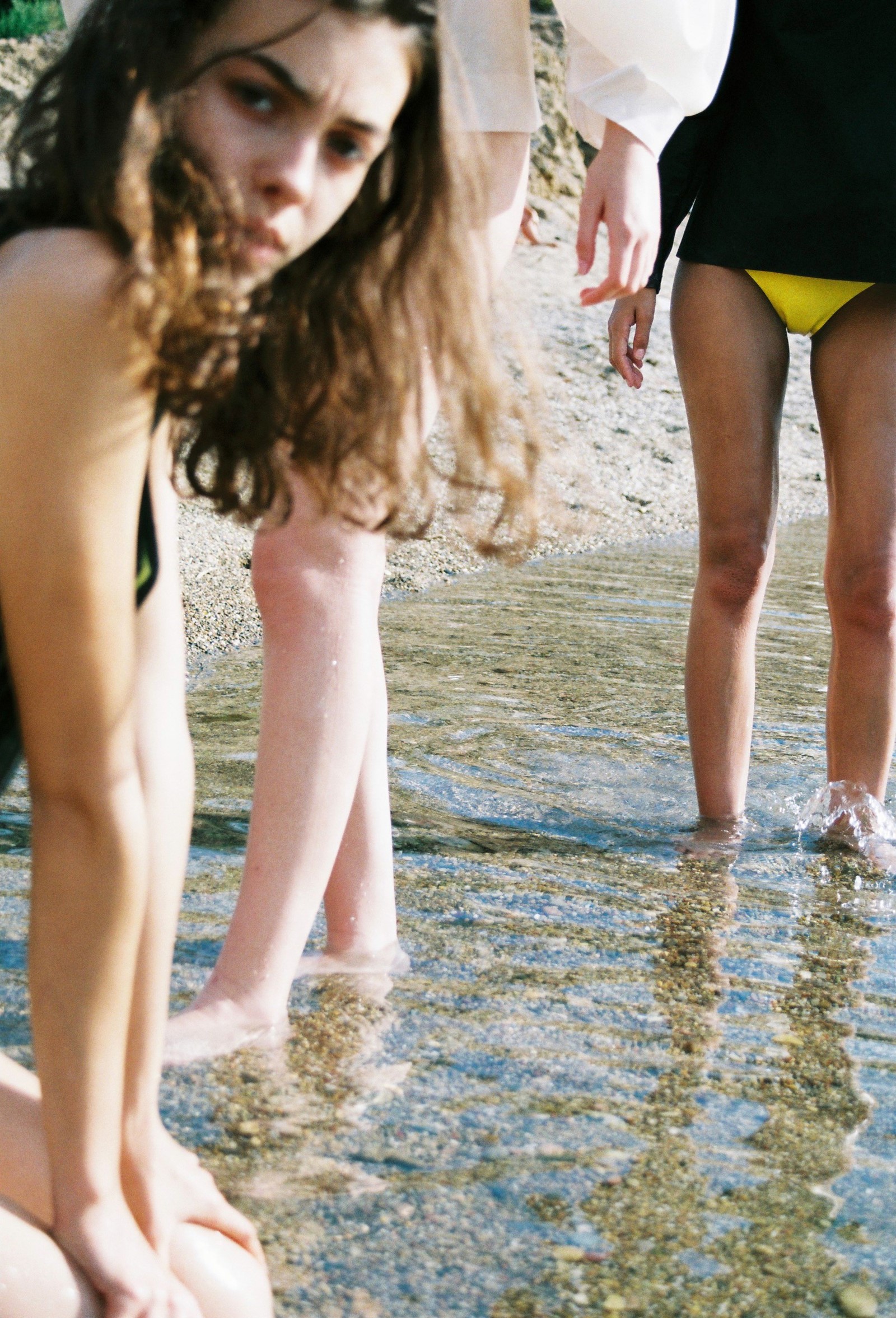
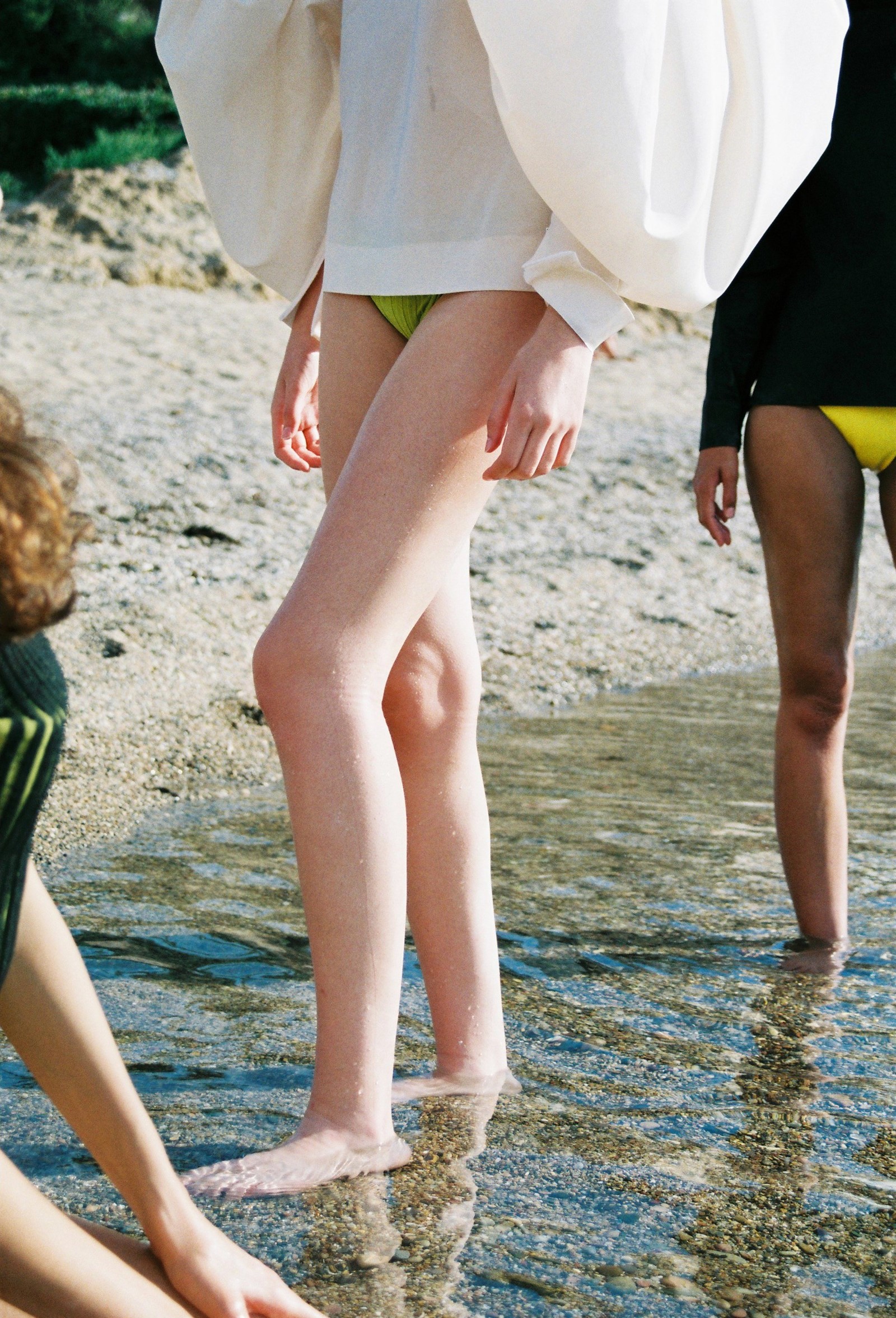
The rest of her process, Cánovas del Vas reports, is often just a series of happy mistakes. “Things got fucked up, but we learn from that,” she recalls of one particular garment from her graduate collection. “But you know, it fucked up but it looks good. Now how can we make it so it’s more refined?” She approaches finding inspiration with a hoarder’s instinct – citing music, videos she finds on YouTube, poetry and photographs (both found and taken herself) as all influencing her final output. The results are documented in meticulous research books, which she hopes will become a record of her thought process over the years.
Next week, she will show for the first time outside of Central Saint Martins, alongside fellow Saint Martins graduate Ernesto Naranjo at Paris’ Palais de Tokyo on the invitation of the gallery’s head of special events, Vittoria Matarrese, as part of couture week. There, she will combine her graduate collection with new pieces created since, and sees it as the culmination the past year and a half’s work. On what happens afterwards, she is pragmatic. “I want to keep making collections in the hope that people will love it,” she says. “There is so much out there that it doesn’t make sense to me to continue doing this if it’s something that wouldn't be bought and really loved.”
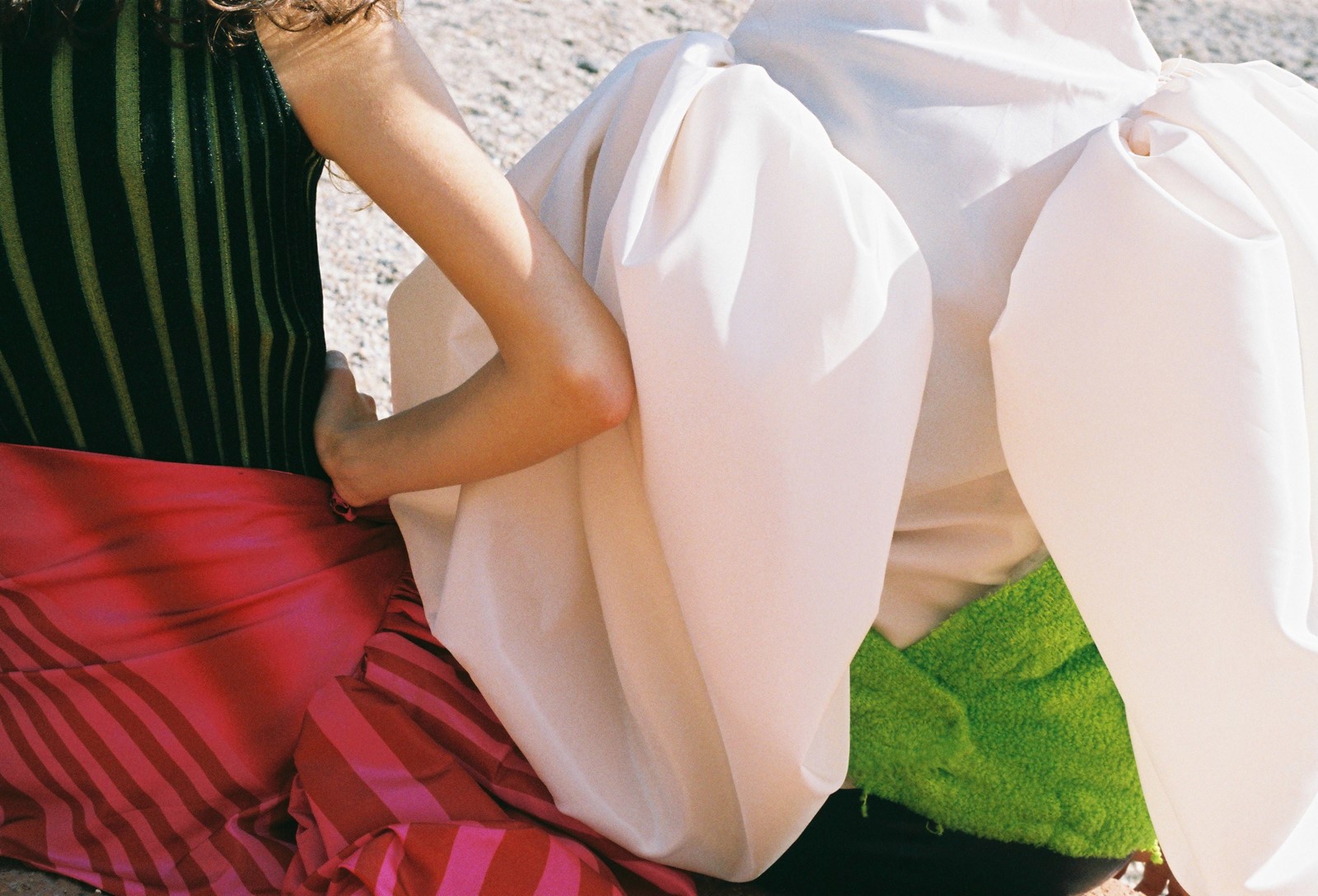
Before that, though, she took the collection to Spain alongside photographer Marie Déhé to capture it among the Andalucían landscape where she grew up. “It was about having these super colourful shapes with just pure nature,” she says. “We had done a lot of research on photographs taken from a far angle, and then distorted somehow.” The designer was born to Spanish and Argentinian parents, and the photographs particularly recall the free spirit of her mother. “I wanted to shoot outside because we have never photographed outside before,” she says. “With my mother I was always allowed to be outdoors, in the sun.”

